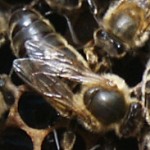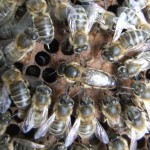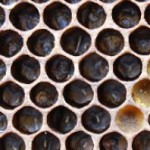When you receive your queen, I would suggest you first introduce her to a nuc of young queenless bees rather than directly trying to requeen a full colony, especially if it has been queenless for a long time and is full of older bees. Make sure the nuc has not started queen cells when you introduce the queen in her cage and after she is out of the cage check a few days later and remove any queen cells if present. Once the queen has been laying for a couple of weeks in the nuc, this can be combined with the colony to be requeened after removal of its queen.
If introducing the queen directly to a colony via an introduction cage, it is critical to establish that the colony is queenless. An absence of brood for several weeks does not mean that a colony is queenless as colonies like these often have a virgin queen or a non laying queen. The introduced queen is always killed in a colony like this. The workers in the colony will kill the introduced queen. The two queens do not meet to ‘fight it out’ as many seem to believe!
Test for queenlessness a few days before introducing your queen by inserting a test frame with small larvae on it. If the colony is truly queenless, queen cells will be drawn on this frame. If no cells are drawn the colony almost certainly has a queen in it and you will have to find it and remove it if you want to introduce another queen. The queen could be a scrub queen no bigger than a worker.
Avoid trying to requeen a colony which has been queenless for so long that it has developed laying workers. Although possible, your chance of success is low and an introduced queen will usually be killed. Good information about laying worker colonies can be found here.
You will have received your queen in an introduction cage of which there are several variants. The cage will be closed by a plastic tab or by tape.
There is no need to remove the attendants although many sources will argue that this is critical. I never remove attendants and I rarely lose a queen on introduction. Don’t spray the cage with water when you receive it as the bees and queen will die if they get wet & sticky. A single drop of water placed on top of the cage is more than enough. Don’t leave the cage somewhere hot where the fondant is likely to melt. Room temperature is ideal.
Put the cage in the colony for 24 hours suspended between two frames with the fondant at the bottom. After a day, check the cage and if the bees seem interested in the cage and non aggressive towards it, open the plastic tab and put the cage back in the colony in the same place. Leave for 2 days and check back that the queen is out of the cage.
If she is out of the cage, remove it and quickly close up the hive.
If she is still in the cage and the fondant has gone hard, scrape out a little but don’t manually release her unless you are confident that you can put her back in the cage if the bees start to attack her.
Check after a few days for eggs and when you see eggs close up quickly again. You don’t have to see the queen at this point. Remove any queen cells present. A hive with a new queen is still quite delicate and too much intrusion can lead to her being balled and killed.
Good luck with your new native queen.





Hello Jonathan
Just wondering when you posted the queen. You said end of the month and tomorrow is August.
My address is Orchard House, Broad Lane, L29 8YB.
I ordered about 6 weeks ago.
Many thanks
John Turner
Hi John. I emailed you on 24th July re a posting date but did not hear back. Do you want me to post your queen right away?
Jonathan
hi Jonathan
i made a nuk up last year with one of your queens shes doing well do you have any mated queens i want to make up 2 nuks but not to late in the year ,have i left it to late
thanking you Pete
Hi Pete. I always have a 3-4 week minimum waiting time from the point of ordering
Hi,
Please could you tell me or help me ,
I have been given a nuc ,from quite an aggressive hive , there is no Queen and no brood , I have been feeding them in the June gap,
Would I be able to put A new black Queen in this hive ,as it has no brood ,
Will this ,in the long run ,calm the bees ,as I do wish to have all my hives with black bees eventually
If so ,I would like to order ,
Thanks for your help
Jane
you need to put in a test frame to see if it is queenless
Hi Jonathan, this is a great guide. Regarding this final paragraph:
Check after a few days for eggs and when you see eggs close up quickly again. You don’t have to see the queen at this point. Remove any queen cells present. A hive with a new queen is still quite delicate and too much intrusion can lead to her being balled and killed.
I’m new to this, how can I remove queen cells without doing a full (and intrusive) frame by frame inspection?
The main thing is to remove any queen cells before the queen is introduced but if you seen any when you are checking for eggs make sure to remove them. Some people spend 45 minutes looking for the queen and it is that sort of behaviour which you need to avoid. A check for eggs should take 2 minutes max and if you happen to see a queen cell make sure to remove it.
Hi Jonathan.
I just introduced a new queen I got from you yesterday into a nuc I had made up. On checking the cage today I see that the bees have sealed up all the holes in it. Not quite sure what this means. Do you think I should delay releasing her. Any advice would be appreciated. Thank you.
That’s a bad sign.
Are you sure there is no virgin present?
How did you make up the nuc?